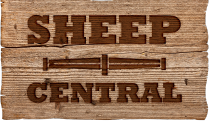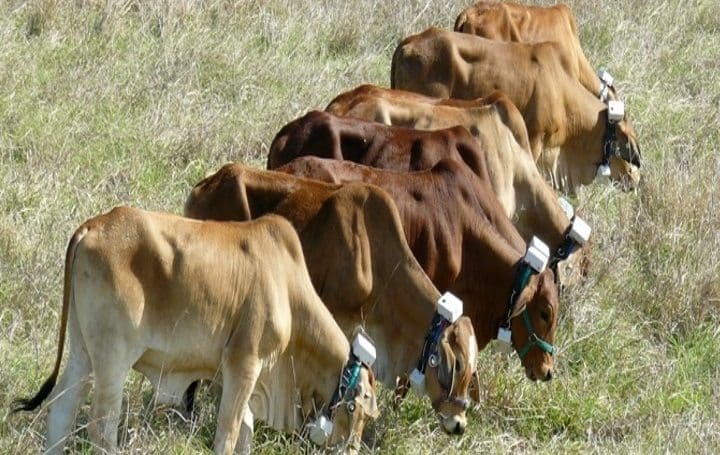AN INQUIRY looking into permitting the use of virtual fences in New South Wales has heard of the clear division between animal rights and industry groups on the use of the emerging technology for managing cattle and other grazing livestock.
Independent MP Phil Donato put a bill forward earlier this year to amend the state’s animal welfare laws with a provision that allows for virtual fencing collars for the purposes of confining, monitoring and tracking stock animals.
The bill has been put to a parliamentary committee, which held public hearings earlier this month displaying a range of different perspectives. Virtual collars are permitted in all states and territories bar NSW.
Welfare comparable to electric fences
University of Tasmania researcher Megan Verdon said plenty of work had been done to test the welfare implications of virtual fencing in Tasmania where it is permitted.
She said the results have shown that virtual fences are similar to electric fences from an animal welfare perspective.
“We found in our system that the animals learn this very quickly. Within about four days, they were moving by themselves,” Dr Verdon said.
“The biggest questions that we still have around that is whether it can be used to subgroup cattle, either within a herd or to move a portion of the herd and not the rest. Cattle are very social animals, and I would want to see that application verified before it’s used that way.”
Dr Verdon said she had tested the technology on herself and found a lot of similarities to electric fence shocks.
“I understand the reason why some of the developers prefer to use words like ‘pulse’. One of the reasons I prefer to use ‘shock’ is because that’s what I think that the sensation is,” she said.
“It feels similar to me to a moderate shock from an electric fence or a normal shock from an electric fence, but it’s different in that when you get an electric fence shock it goes vroom right through your body down to the ground.
“When you get a shock from one of these, it’s in a very localised area. If you do it on your arm, you just feel it there. For me, it felt like a shock but also just in a localised area for a very short duration.”
Developers talk up welfare credentials
The inquiry also heard from virtual fencing developers Gallagher, Halter and MSD animal health who were keen to talk up the ability of virtual fencing to assist with better land management and traceability.
MSD director of marketing Frank Wooten said one of the big benefits of virtual fencing was an ability to identify when animals are in places they should not be.
“The benefit that virtual fencing brings is that it allows you to be alerted to where that animal is and that it alerts you in real time, versus the ability to potentially have to wait until somebody is driving by that location or, by chance, finds out that that animal is not in a place where they thought they were,” Mr Wooten said.
“Like all of our competitors and colleagues, we are happy to run through. We submitted all of the different safeguards that we have as it relates to animal welfare, and we see no vital risk as it relates to those animals due to using the system.”
Welfare groups oppose virtual fencing
Welfare groups are largely opposed to the idea, with several groups including the Four Paws, Animal Defenders Office and the RSPCA fronting the inquiry.
Four Paws program lead Louise Ward said one of the group’s key concerns was “habituation”.
“If the animals cannot see the fence, this can lead to more shocks due the difficulty for the animals to associate the aversive punishment with a specific, physical barrier, as is the case with conventional or electric fences.
“We also note the large number of submissions discussing that an inferred benefit of virtual fencing is that it allows the movement of animals more readily, with some submissions mentioning daily movement of animals. This can subsequently hinder their ability to learn and habituate to their surroundings, causing stress and impacting animals’ overall health and wellbeing.”
RSPCA NSW chief veterinarian Louise Ward said the organisation was concerned about the changes to the laws relying too much on people doing the right thing.
“RSPCA is uniquely positioned to provide evidence that those who are responsible for animals cannot be always relied upon to do the right thing and the result can be animal suffering,” Dr Ward said.
“The question is whether there can be adequate assurance that mitigations are in place that can limit this harm sufficiently in both magnitude and frequency to justify the benefits that virtual fencing can bring to producers and land management.”
“The bill before us certainly does not provide adequate assurance that harm will be reduced to the lowest possible level, firstly because it does not confine the provisions to certain livestock species. The science is clear that virtual fencing research, processes and safeguards are much more advanced in cattle than in any other species.
“There are still gaps in what we know about their use in cattle, particularly on long-term use and outcomes.”
Animal Care Australia supports virtual fencing.
NSW Farmers support virtual fencing
NSW Farmers has largely announced its support for the bill, saying it could advance the industry. Animal Welfare Committee chair Robert McIntosh said virtual fencing had a significant range of benefits that farmers could access if the technology was legalized for use in NSW.
“The science and technology behind virtual fencing indicates this tool has significant benefits for animal welfare, while also delivering better economic returns for farmers through grazing efficiencies,” Mr McIntosh said.
“In the event of floods, fires and other natural disasters, this technology could well be used to help move livestock to safe areas, without putting humans or animals at risk.
“Reduced fencing costs and enabling noxious weeds to be fenced off and controlled are just two of other benefits of virtual fencing which we could see farmers able to take advantage of if the technology was legalised in NSW.
“In reality, the sky’s the limit when it comes to what’s possible with this tool – we just need to be able to use it.”
UNE research has found virtual fencing to be less stressful on sheep.
- The inquiry is set to hand down its report in October




The opponents of virtual fencing have about as much logic on their side as the shearers who opposed wide combs. Eventually reality will prevail, but just like the wide combs dispute, industry efficiency and productivity will be adversely impacted for decades. We are indeed a wealthy country to be able to afford such ideocracy.